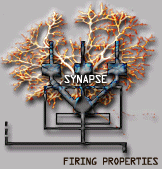 proceso del pensamiento
proceso del pensamiento proceso del pensamiento
proceso del pensamiento
Definición: Overall Process
Figure 1 illustrates the overall Thinking Process flow, and identifies the primary tools. The Thinking Processis designed to answer three questions,
(1) What to change?
(2) What to change to?, and
(3) How to cause the change.
The process steps are linked so that the output of each step provides the input for the next step.
Figure 1:
The Thinking Process leads us from undesired effects, through the Core Problem, to successfulimplementation. (The Evaporating Cloud is the transition to what to change to, and is often included in that box.)
The Thinking Process is compatible with Total Quality principles. Figure 2 illustrates a generic problem solvingcycle. It is an enhanced version of the PDSA cycle originated by Dr. Shewhart and championed by Dr. Deming. TheThinking Process generally follows this same approach, with one significant distinction that makes all of the difference.Instead of finding a root cause to a problem, the thinking process finds the Core Problem, which is the root cause of the root causes. This greatly simplifies the plan and implement phases of system improvement. Many quality processesstall or fail at implementation.
Figure 2: The generic problem solving process follows the Shewhart cycle of Plan, Do, Study (or Check),Act.
The tools are as follows:
Current Reality Tree (CRT): The CRT describes the system as it is today. The CRT process starts with theobserved Undesired Effects (UDEs), and builds, with strict logical rules, a model of the system in the 'IF THEN'format. This model is carefully scrutinized by people with intuition about the system and with logical constructionto ensure its validity. The CRT is then evaluated to discover the Core Problem. Figure 3 illustrates a CRT, basedon a description by Dr. Goldratt in The Goal.
Cloud: The Cloud (sometimes called the Conflict Resolution Diagram) is fixed format necessity tree constructedto determine how to replace the Core Problem with a positive effect that is its opposite. The Cloud has many otheruses as a stand alone tool, but in the Thinking Process it is used to determine the initial Injection (Effect)needed to create a future system that produces the desired effects. The Cloud for the Thinking Process is createdby starting with the Core Problem, and defining an effect that is its opposite. The CRT is used to establish whythe positive statement of the Core Problem does not exist in reality. Figure 4 is an example of Cloud for implementingTQM.
Figure 3: A Current Reality Tree (CRT) demonstrates the logic concluding that improvement requires identificationof the Core Problem. The tree is read IF 'tail of arrow' THEN 'head of arrow.' The oval means AND.
Figure 4: The Cloud aids resolving the Core Problem
Future Reality Tree (FRT): The FRT is a system model of the 'Should be' system, including the Injection (effects)necessary to create and sustain the future state. FRT construction starts with the Injection from the Cloud, anduses the logic and UDEs from the CRT to develop the future system. As part of FRT construction, the UDEs are turnedinto Desired Effects.
Negative Branches (Not shown on the figures): As part of finalizing the FRT, the potential negative undesiredeffects of the suggested injections are evaluated. Usually, every planned improvement injection has some potentialnegative outcomes. Additional injections are added to the FRT to 'trim' these negative branches. Negative branchesalso are used as stand alone tools to evaluate potential undesirable effects of any planned action.
Prerequisite Tree (PRT): The prerequisite tree is a time phased necessity tree of the effects which must becaused for the FRT to result. Each Injection from the FRT is assessed to determine the obstacles which must beovercome for the Injection to exist. Intermediate objectives are defined to overcome the obstacles, and logicallylinked in a time sequence with the Injections. The PRT has stand alone utility as a tool to plan the achievementof ambitious goals. There is great power in getting a team to identify all of the obstacles they foresee at thebeginning of a project, and creating a plan based on overcoming all of these obstacles.
Transition Tree (TRT): The TRT is the time phased action plan to achieve the effects on the PRT. The TRT isa unique plan, in that it ties the actions to the logic for doing them, and is used to measure progress in termsof the EFFECTS produced, not the performance of the action. The TRT has broad application for achieving any effectyou wish. (For example, TRTs are used to get buy-in to the Thinking Process results, and Avraham Goldratt Institutemakes extensive use of TRTs for training.),
Summary
The Thinking Process is a system improvement process. The individual Thinking Process tools are amenable to individualapplication for specific purposes. For example, you can use the Prerequisite Tree and Transition Tree to plan achievingany objective. You can use the Cloud for a wide range of problems, ranging from individual internal decision makingto resolution of international issues.
The Thinking Process puts extensive emphasis on the portions of the process focusing on 'How to cause the change?'Implementation is usually the constraint on changes that require paradigm shifts, as most improvements do. Theimplementation emphasis is reflected in the specific tools, including the Prerequisite Tree and the TransitionTree, and also in the communication processes and buy-in processes. All of the processes have been developed, tested,and improved.
The Thinking Process undergoes rapid continuous improvement. Substantial improvements have been made to the trainingprocess. Recent improvements include the development of enhanced course material and improvements in the elementsof the process, such as the Transition Tree. Many of these changes have come from students and organizations thatare applying the process.
19.may.1999
Pulsar tecla de vuelta
Glosario de Carlos von der Becke.